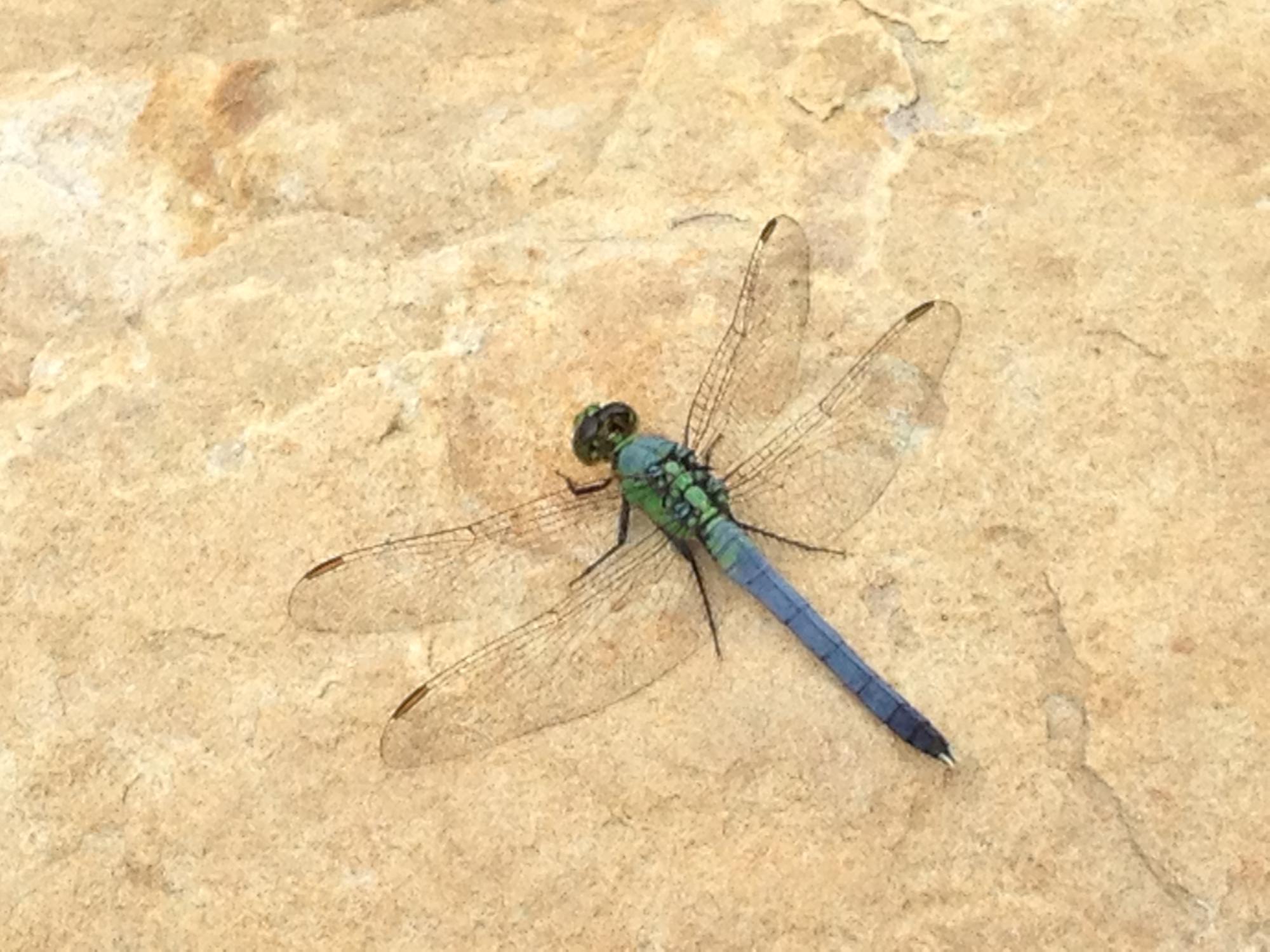Eastern Pondhawk & Blue Dasher
Female and immature male Eastern Pondhawks have green and black bodies. They lack the pruinose blue color of mature males.
Male Blue Dasher. This is another abundant and widespread species.
This is a teneral female Blue Dasher. The eyes are red in young individuals like this one.
Male Eastern Pondhawk. This is an abundant and widespread species, one of the most common dragonflies in our state. Notice the green face and white claspers. These field marks help to distinguish this species from the similar Slaty Skimmer.


Female Blue Dasher. Their eyes turn green with maturity.
Another female Eastern Pondhawk. This one was photographed at Cowan Lake.
You will often see Blue Dashers obelisking on hot days (pointing their abdomens toward the sun, in order to reduce body heat).
Another male Eastern Pondhawk. The males start out green like the females, but they turn blue with maturity.
Another young female Blue Dasher, photographed at Caesar Creek. The Blue Dashers were emerging there by the hundreds on this day in late May.
This is a female Eastern Pondhawk. She looks nothing like her male counterpart.
Eastern Pondhawks fly from May through October. They can tolerate polluted urban ponds and wetlands better than most dragonflies.
Note that this Blue Dasher has a white face, striped thorax, and black abdomen tip. These field marks help to distinguish Blue Dashers from Eastern Pondhawks (in addition to their smaller size).
Blue Dashers fly from May through September, with stragglers into October. I found one Blue Dasher on April 17, 2019, which was an unusually early date for this species. (I suspect it was a migrant from the south.)